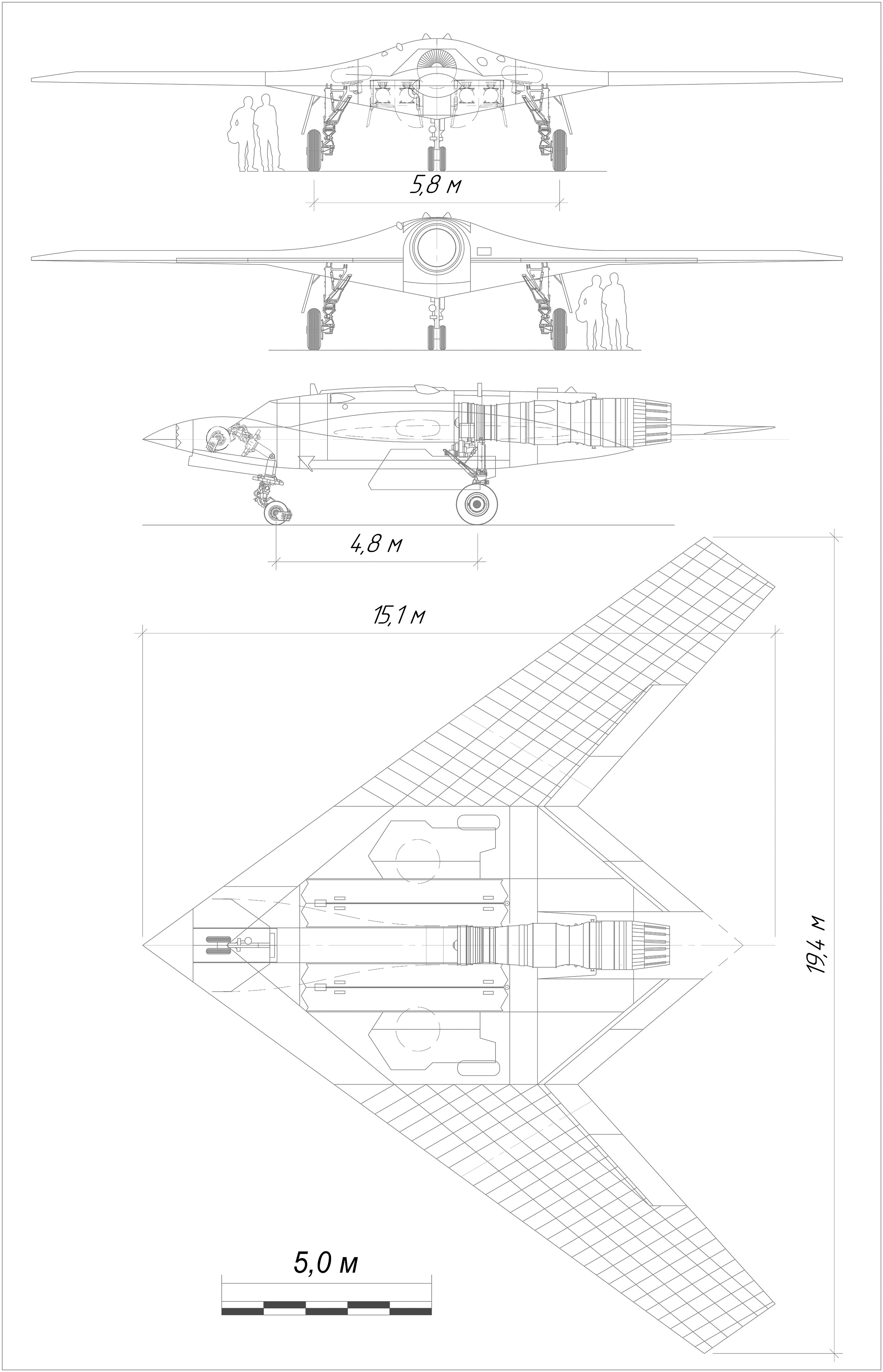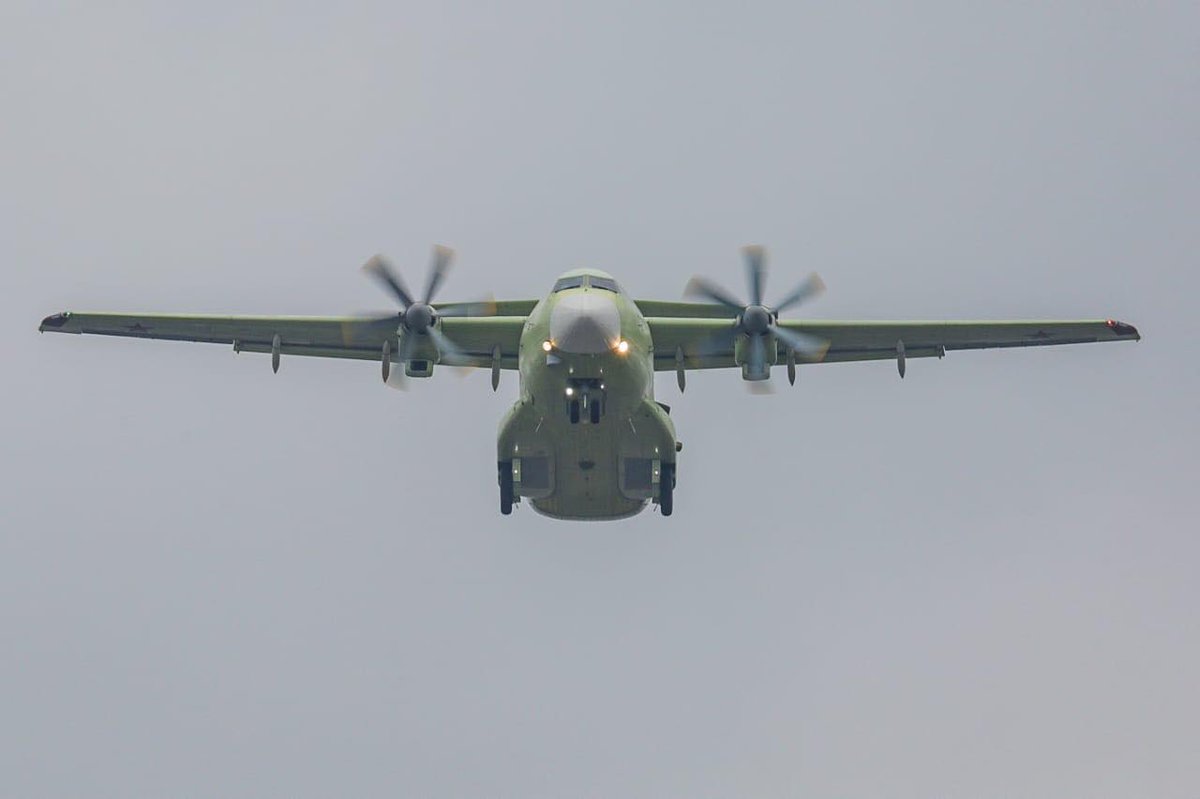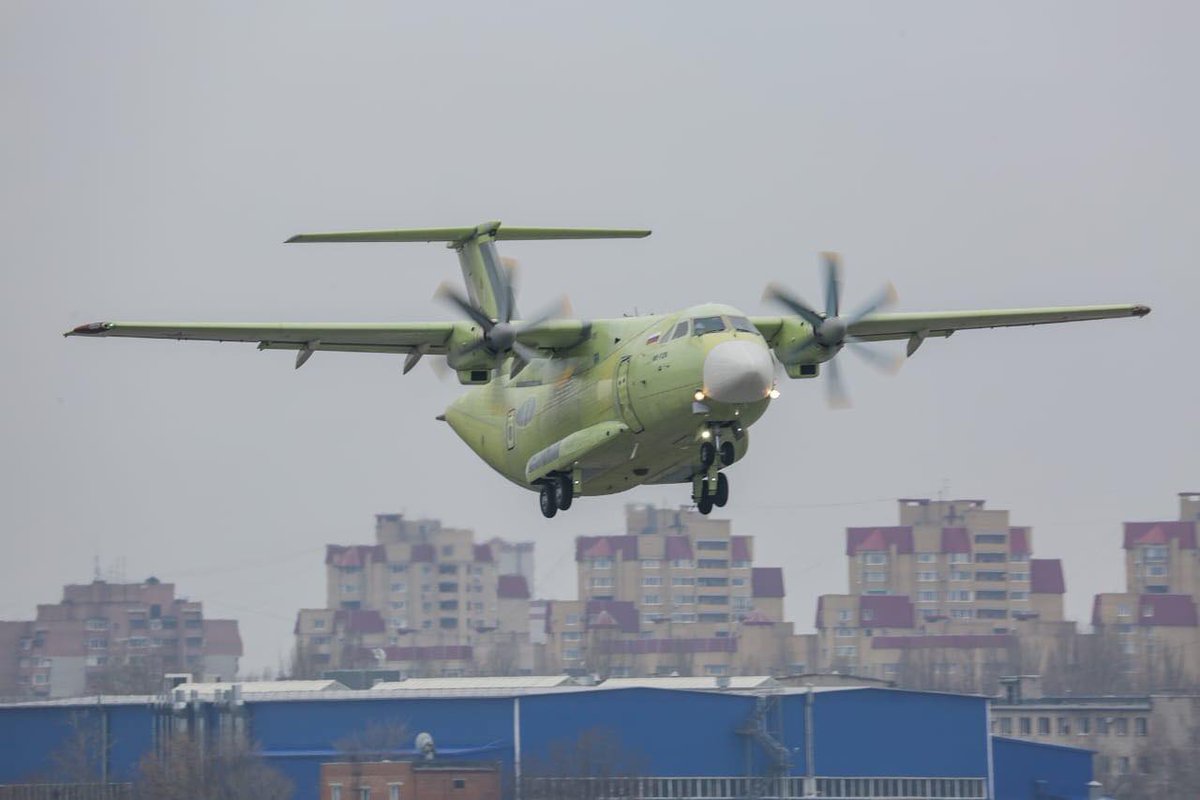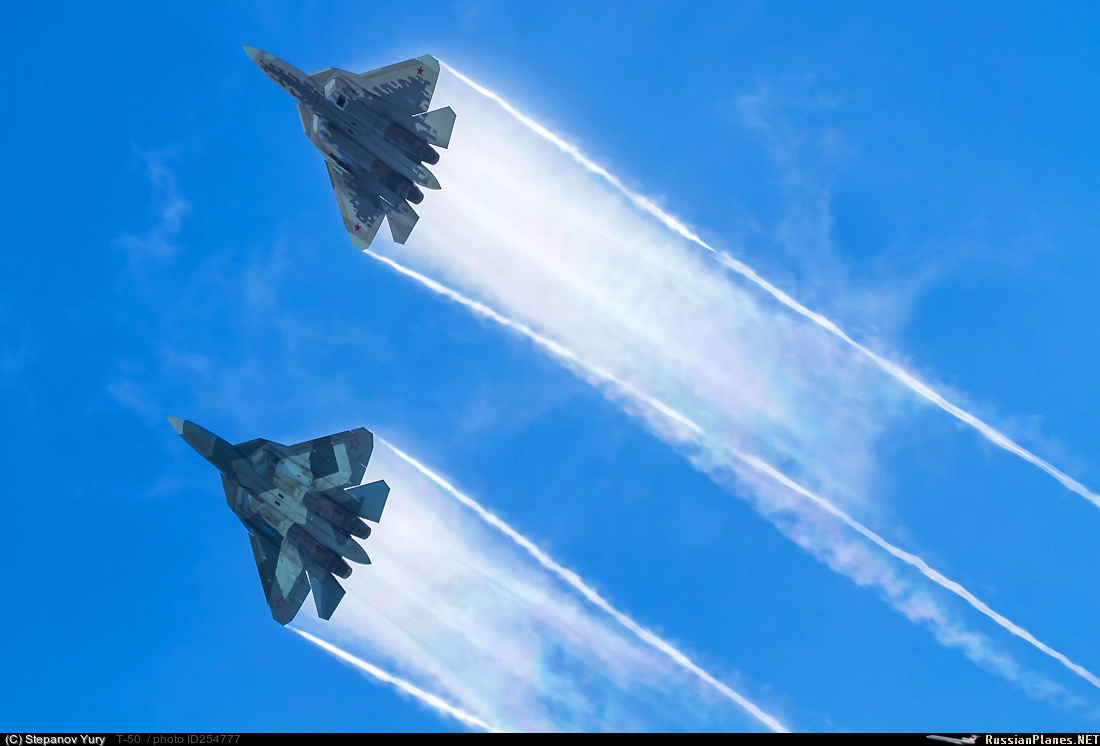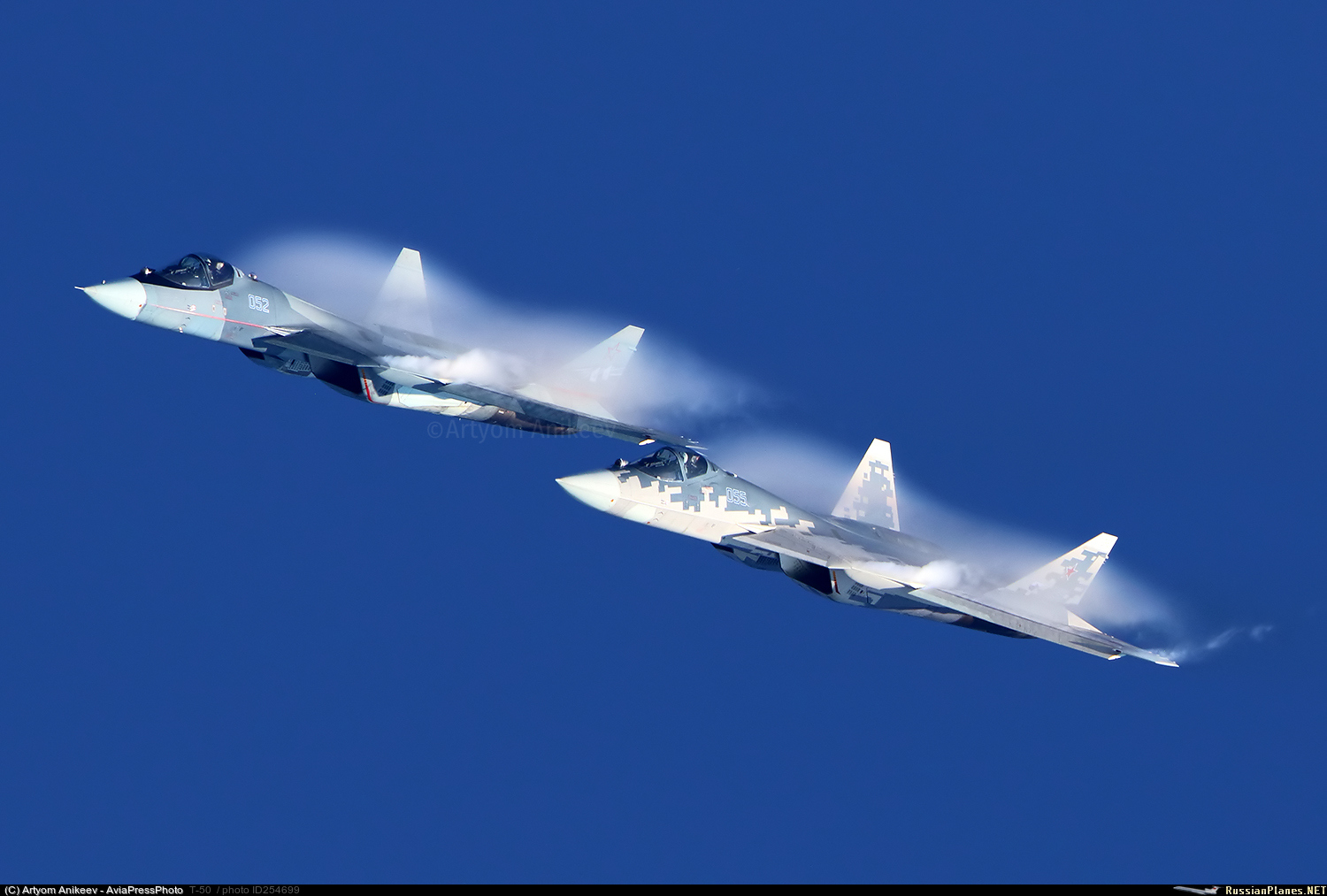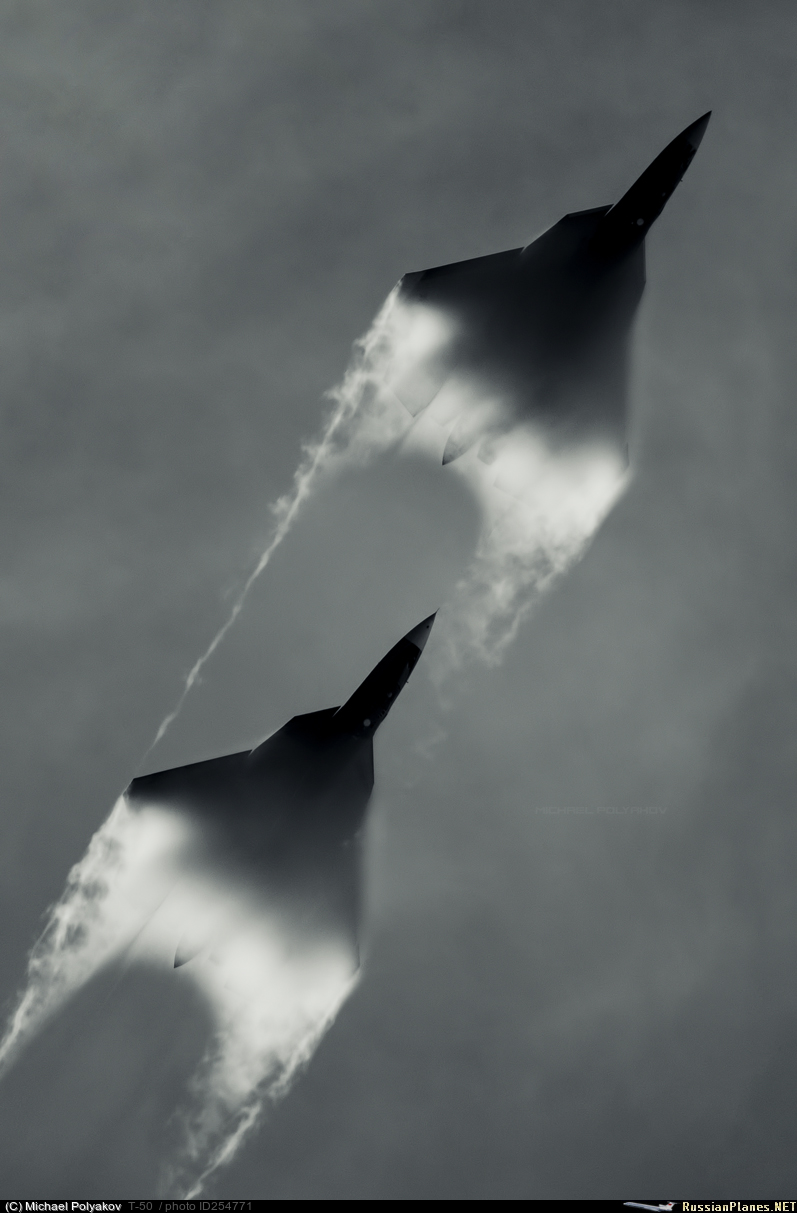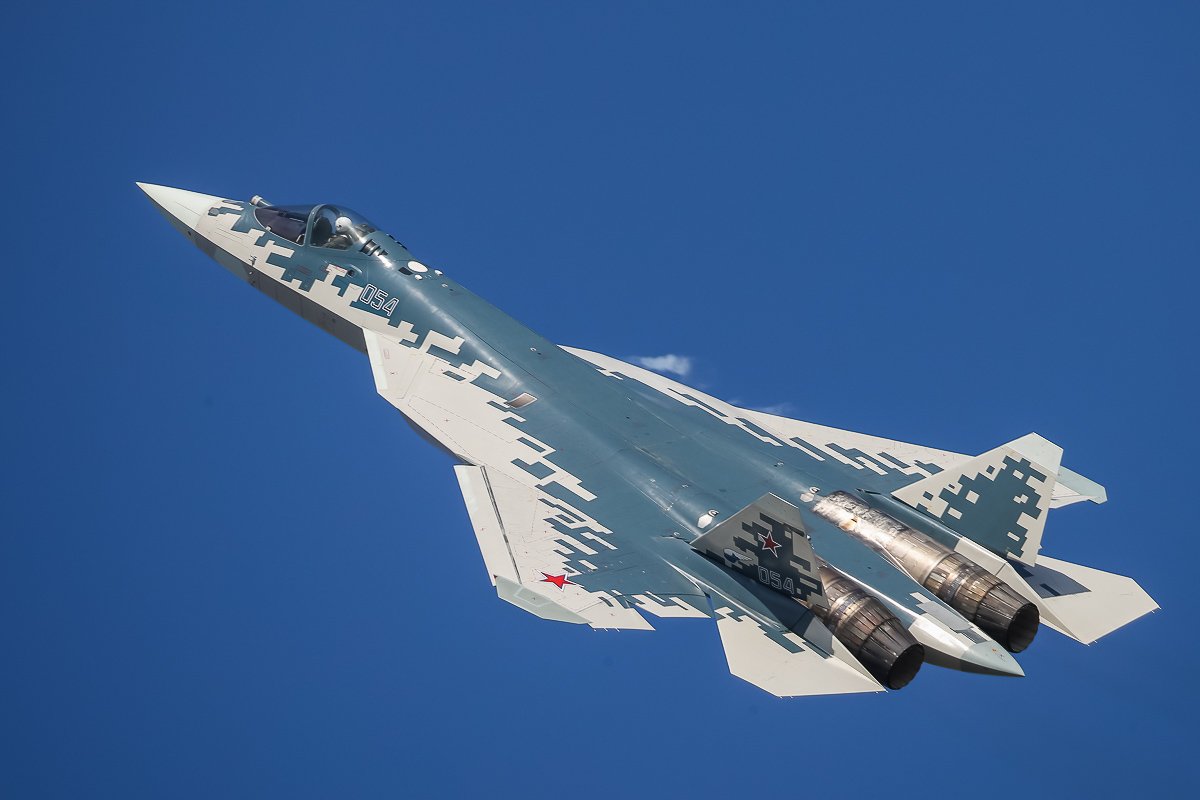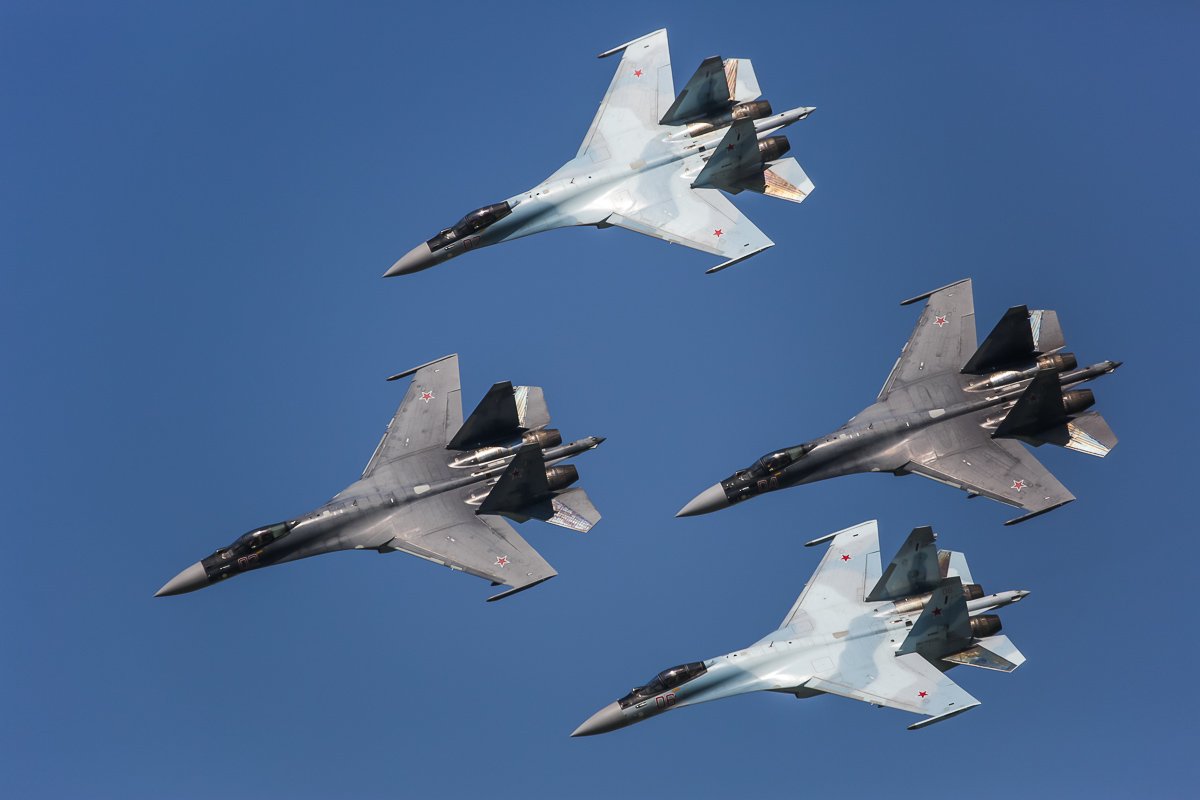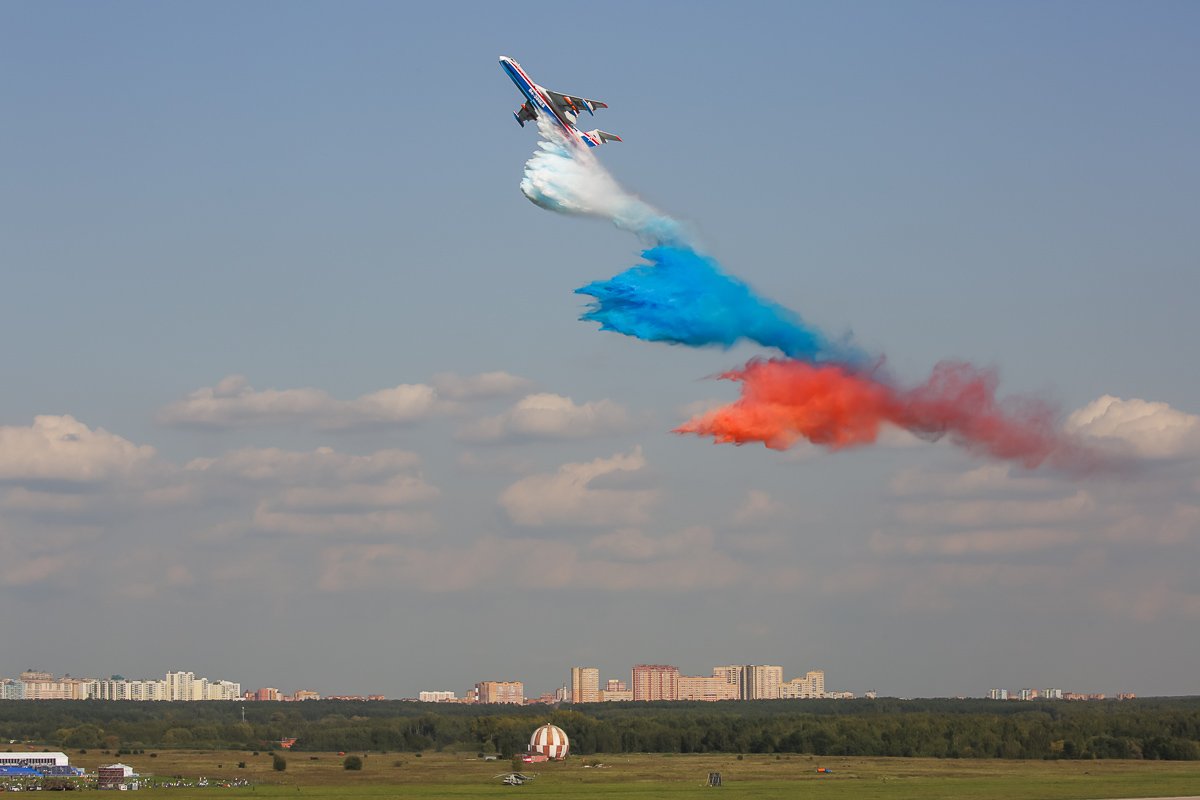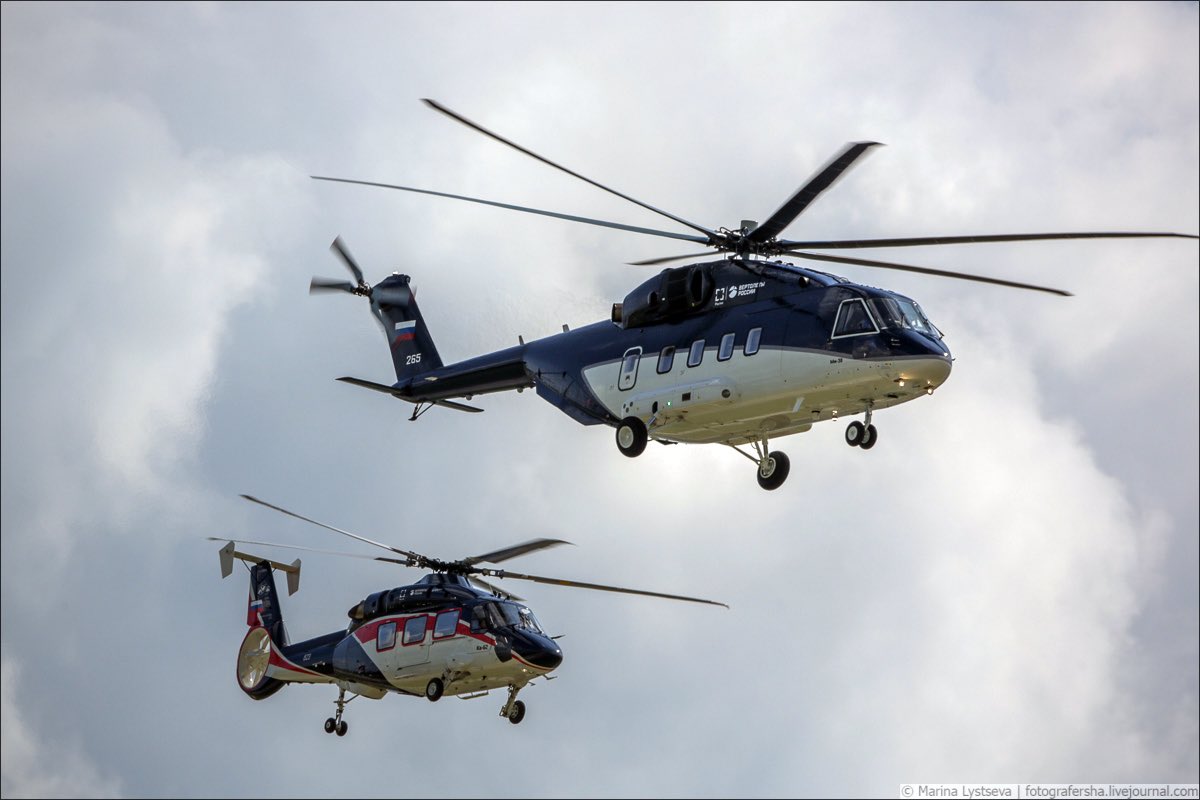You are using an out of date browser. It may not display this or other websites correctly.
You should upgrade or use an alternative browser.
You should upgrade or use an alternative browser.
Russian Military Aviation
- Thread starter Ashwin
- Start date
This Photo May Prove Russia's New Hunter-B Killer Drone Isn't Very Stealthy
This Photo May Prove Russia's New Hunter-B Killer Drone Isn't Very Stealthy

David Axe
,
The National Interest•February 4, 2019
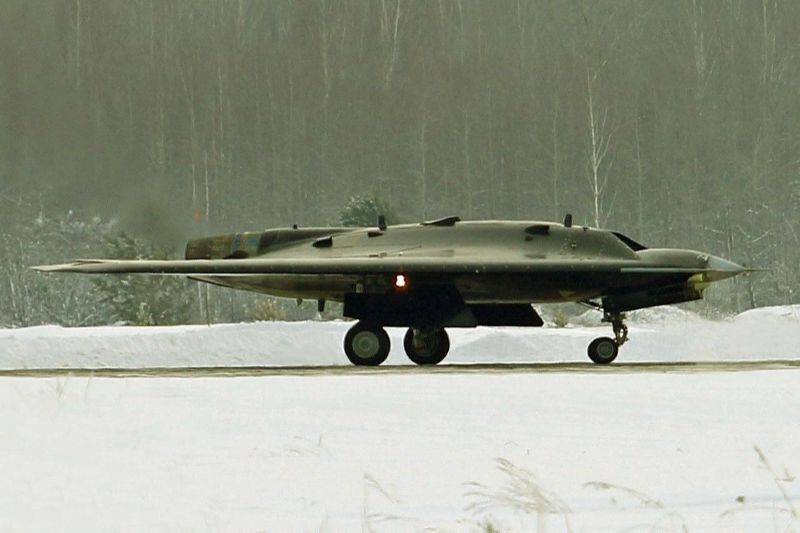
David Axe
Security,
A new photo of Russia's Hunter-B killer drone appears to confirm major drawbacks in the vehicle's design.
This Photo May Prove Russia's New Hunter-B Killer Drone Isn't Very Stealthy
A new photo of Russia's Hunter-B killer drone appears to confirm major drawbacks in the vehicle's design.
With its apparently straight engine inlet and bulky, exposed engine nozzle, the approximately 50-feet-wingspan Hunter-B probably isn't very stealthy.
The first blurry images of the Hunter-B drone appeared on Jan. 23, 2019 on a Russian aviation website. Those photos depict, from behind and in front, a tractor towing the unmanned aerial vehicle along a snow-ringed runway at an airfield in Novosibirsk in southern Russia.
A new photo, showing the Hunter-B from the side, appeared on social media in early February. In that new pic, the Hunter-B is either parked on a runway or taxiing under its own power.
Hunter-B hasn’t yet flown its first test flight.
Broadly speaking, Hunter-B is a flying wing that's similar in shape to the U.S. Air Force's B-2 stealth bomber. But aside from its lack of vertical control surfaces, the Russian UAV is non-stealthy.
For one, it appears that the Hunter-B's nose-mounted inlet directly exposes the face of the drone's engine. That could produce a huge blip on any radar viewing the Hunter-B from head-on. "Most of the [radar-cross section] contribution for the nose region will result from the engine inlet," John Kelly, a Boeing engineer, explained in a 1975 study.
Designers for years have struggled to reduce UAVs' frontal RCS. Northrop Grumman described its X-47B carrier-drone demonstrator as "low-observable relevant" rather than "low-observable," apparently owing in part to the type’s straight inlet.
Stealthy aircraft often feature “serpentine” inlets with winding channels that mask the engine from view.
Northrop managers told reporters that, if the U.S. Navy were to select the X-47B for development into a front-line warplane, the company might modify the design for greater stealth. Perhaps not coincidentally, the X-47B and Hunter-B share strikingly similar nose profiles.
As it turned out, in 2018 the U.S. Navy tapped Boeing with its MQ-25 design to build the fleet's first carrier-launched UAV. The MQ-25 will enter service as an aerial refueling tanker, but also could evolve to perform other roles such as surveillance and strike.
Boeing took pains to include key stealth features in the MQ-25's design. In contrast to the Hunter-B with its nose inlet, the MQ-25's inlet is on its dorsal spine -- a feature Boeing apparently borrowed from Northrop's 1980s-vintage Tacit Blue stealth demonstrator.
Indeed, Tacit Blue and Boeing's MQ-25 are similar in several regards, Aviation Week reporter Graham Warwick pointed out. "On Tacit Blue the engines exhausted from a slot nozzle located between V-tails -- which also seems to be the case with Boeing’s MQ-25," Warwick wrote.
A wide, short slot nozzle helps to mask a drone's engine from sensors viewing the vehicle from below, behind and the sides. Even the modestly-stealthy X-47B has a slot-like nozzle.
On Hunter-B, by contrast, the engine juts out of the back of the airframe for a span of several feet, which is "about as bad as it gets when it comes to reducing the infrared and radar signatures of the aircraft," The War Zone reporter Tyler Rogoway wrote.
Hunter-B is not very stealthy. But that doesn't mean the Russian air force won't deploy the drone in large numbers in the near future. Russia's experience in Syria underscored the need for armed drones, Samuel Bendett, an expert on the Russian military, told reporter Kelsey Atherton.
"Going into Syria in 2015, Russia was lacking a key combat element — the ability to hit targets quickly following their identification, one of the key functions of [unmanned combat air vehicles] around the world today."
Weighing 20 tons and capable of speeds up to 620 miles per hour, Hunter-B likely will be the "heaviest and fastest UAV [in Russian service] if and when fielded," Bendett said. The developers reportedly plan to fly the drone for the first time this year.
Hunter-B could give the Russian air force the ability to quickly strike pop-up targets. It just probably won’t be capable of sneaking past enemy air defenses in order to do so.
This Photo May Prove Russia's New Hunter-B Killer Drone Isn't Very Stealthy

David Axe
,
The National Interest•February 4, 2019
David Axe
Security,
A new photo of Russia's Hunter-B killer drone appears to confirm major drawbacks in the vehicle's design.
This Photo May Prove Russia's New Hunter-B Killer Drone Isn't Very Stealthy
A new photo of Russia's Hunter-B killer drone appears to confirm major drawbacks in the vehicle's design.
With its apparently straight engine inlet and bulky, exposed engine nozzle, the approximately 50-feet-wingspan Hunter-B probably isn't very stealthy.
The first blurry images of the Hunter-B drone appeared on Jan. 23, 2019 on a Russian aviation website. Those photos depict, from behind and in front, a tractor towing the unmanned aerial vehicle along a snow-ringed runway at an airfield in Novosibirsk in southern Russia.
A new photo, showing the Hunter-B from the side, appeared on social media in early February. In that new pic, the Hunter-B is either parked on a runway or taxiing under its own power.
Hunter-B hasn’t yet flown its first test flight.
Broadly speaking, Hunter-B is a flying wing that's similar in shape to the U.S. Air Force's B-2 stealth bomber. But aside from its lack of vertical control surfaces, the Russian UAV is non-stealthy.
For one, it appears that the Hunter-B's nose-mounted inlet directly exposes the face of the drone's engine. That could produce a huge blip on any radar viewing the Hunter-B from head-on. "Most of the [radar-cross section] contribution for the nose region will result from the engine inlet," John Kelly, a Boeing engineer, explained in a 1975 study.
Designers for years have struggled to reduce UAVs' frontal RCS. Northrop Grumman described its X-47B carrier-drone demonstrator as "low-observable relevant" rather than "low-observable," apparently owing in part to the type’s straight inlet.
Stealthy aircraft often feature “serpentine” inlets with winding channels that mask the engine from view.
Northrop managers told reporters that, if the U.S. Navy were to select the X-47B for development into a front-line warplane, the company might modify the design for greater stealth. Perhaps not coincidentally, the X-47B and Hunter-B share strikingly similar nose profiles.
As it turned out, in 2018 the U.S. Navy tapped Boeing with its MQ-25 design to build the fleet's first carrier-launched UAV. The MQ-25 will enter service as an aerial refueling tanker, but also could evolve to perform other roles such as surveillance and strike.
Boeing took pains to include key stealth features in the MQ-25's design. In contrast to the Hunter-B with its nose inlet, the MQ-25's inlet is on its dorsal spine -- a feature Boeing apparently borrowed from Northrop's 1980s-vintage Tacit Blue stealth demonstrator.
Indeed, Tacit Blue and Boeing's MQ-25 are similar in several regards, Aviation Week reporter Graham Warwick pointed out. "On Tacit Blue the engines exhausted from a slot nozzle located between V-tails -- which also seems to be the case with Boeing’s MQ-25," Warwick wrote.
A wide, short slot nozzle helps to mask a drone's engine from sensors viewing the vehicle from below, behind and the sides. Even the modestly-stealthy X-47B has a slot-like nozzle.
On Hunter-B, by contrast, the engine juts out of the back of the airframe for a span of several feet, which is "about as bad as it gets when it comes to reducing the infrared and radar signatures of the aircraft," The War Zone reporter Tyler Rogoway wrote.
Hunter-B is not very stealthy. But that doesn't mean the Russian air force won't deploy the drone in large numbers in the near future. Russia's experience in Syria underscored the need for armed drones, Samuel Bendett, an expert on the Russian military, told reporter Kelsey Atherton.
"Going into Syria in 2015, Russia was lacking a key combat element — the ability to hit targets quickly following their identification, one of the key functions of [unmanned combat air vehicles] around the world today."
Weighing 20 tons and capable of speeds up to 620 miles per hour, Hunter-B likely will be the "heaviest and fastest UAV [in Russian service] if and when fielded," Bendett said. The developers reportedly plan to fly the drone for the first time this year.
Hunter-B could give the Russian air force the ability to quickly strike pop-up targets. It just probably won’t be capable of sneaking past enemy air defenses in order to do so.
Latest ROFAR update and Questions for everyone.

It seems this is Russia's claimed experimental photon radar. http://newsland.com/community/8211/c...ologii/6557693 В России появился новый тип радиолокатора с элементами радиофотонных технологий :: новости на QRZ.RU
11/22/2018 6:38:51 PM
Source: RTI Concern
At the scientific and technical council in JSC NPK NIIDAR, which is a part of JSC RTI, announced the creation of the first experimental locator with elements of radiophotonic technologies. The scientific and technical council at NIIDAR, in which scientists and designers from Planet Design Bureau, MEPhI, Modul Scientific and Technical Center and other enterprises participated, reviewed the first use in our country of new radiophotonic technologies and components in the experimental radar station created.
This is the first model of an existing experimental locator using radiophoton technologies. Experts have successfully conducted field tests of its components and the entire sample to detect and accompany the air target. In the framework of works on radiophotonics, an ultra-wideband phased antenna array based on radiophotonic elements using optical data transmission lines, a multichannel X-band input analog ultrawideband microwave signal to an optical waveform, an optical diagrammer, and an optical ultra-wideband heterodyne were created.
“We confirmed the possibility of using radiophotonic technologies in radar using discrete elements. The experimental model we created so far has a lot of shortcomings and limitations in application, but the positive result allows us to move on to the next phase of development of radiophotonic technologies, - said Maxim Kuzyuk, General Director of AO RTI, - we need to start developing and developing promising technologies and, in particular, photonic integrated circuits, they can compete with electronic products operating in different ranges of radio waves - in millimeter and centimeter, in when extra bandwidth and high resistance to external electromagnetic effects are required. "

It seems this is Russia's claimed experimental photon radar. http://newsland.com/community/8211/c...ologii/6557693 В России появился новый тип радиолокатора с элементами радиофотонных технологий :: новости на QRZ.RU
11/22/2018 6:38:51 PM
Source: RTI Concern
At the scientific and technical council in JSC NPK NIIDAR, which is a part of JSC RTI, announced the creation of the first experimental locator with elements of radiophotonic technologies. The scientific and technical council at NIIDAR, in which scientists and designers from Planet Design Bureau, MEPhI, Modul Scientific and Technical Center and other enterprises participated, reviewed the first use in our country of new radiophotonic technologies and components in the experimental radar station created.
This is the first model of an existing experimental locator using radiophoton technologies. Experts have successfully conducted field tests of its components and the entire sample to detect and accompany the air target. In the framework of works on radiophotonics, an ultra-wideband phased antenna array based on radiophotonic elements using optical data transmission lines, a multichannel X-band input analog ultrawideband microwave signal to an optical waveform, an optical diagrammer, and an optical ultra-wideband heterodyne were created.
“We confirmed the possibility of using radiophotonic technologies in radar using discrete elements. The experimental model we created so far has a lot of shortcomings and limitations in application, but the positive result allows us to move on to the next phase of development of radiophotonic technologies, - said Maxim Kuzyuk, General Director of AO RTI, - we need to start developing and developing promising technologies and, in particular, photonic integrated circuits, they can compete with electronic products operating in different ranges of radio waves - in millimeter and centimeter, in when extra bandwidth and high resistance to external electromagnetic effects are required. "
Russian MiG-31 Foxhound Shot Down Its Wingman During Disastrous Live Fire Exercise
A new report, citing a leaked Russian government document, says that a crash of MiG-31 Foxhound in Siberia almost two years ago was actually the result of a friendly fire incident during a botched training exercise. In addition, the summary of the mishap suggests that there could be dangerous problems with the aircraft’s Zaslon-AM radar and Baget-55 fire control system that might increase the risk of more accidental shootdowns occurring in the future.
Baza, a relatively new Russian independent online investigative news outlet, revealed the new information on Apr. 23, 2019. The incident in question had occurred on Apr. 26, 2017, over the Telemba proving ground in Buryatia, a semi-autonomous republic within Russia that borders Mongolia. At the time, the Kremlin said that the plane had been on a training exercise, but offered no additional details about the mishap. Both of the Foxhound’s crew survived the incident.
"The plane crashed at a proving ground in an unpopulated area. Both pilots ejected themselves,” the Russian Defense Ministry had said in a statement. “They were promptly evacuated. Their life is not in danger.”
Until now, there had been no additional information about the mishap at all, which Baza’s story noted was unusual in of itself. The Russian government does not generally shy away from blaming crashes on pilot error or grounding entire aircraft fleets if an accident exposes a potential systemic issue with the plane in question.
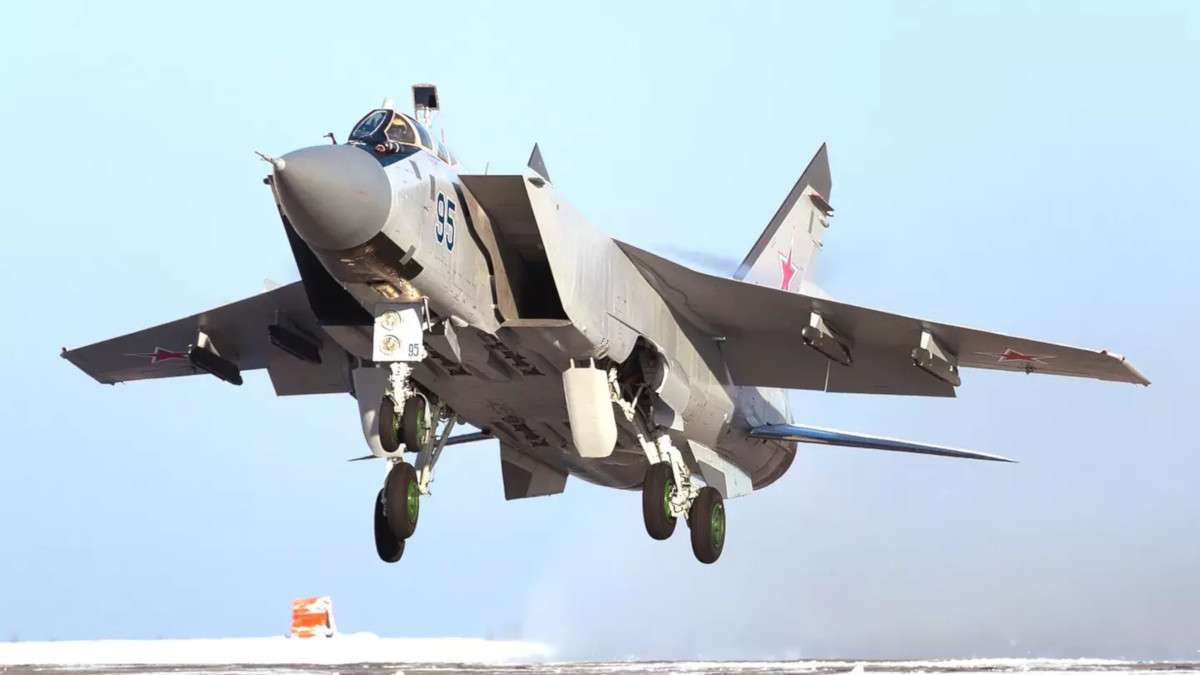
Alex Beltyukov via Wikimedia
A Russian MiG-31 Foxhound.
The report from Rosaviaprom, which oversees the country’s state-owned aviation and space enterprises, that Baza obtaineddoes blame pilot error for the mishap. But it just so happens that they determined that the crew of the crashed plane and the craw in a second MiG-31 taking part in the training exercise were both at fault.
The investigators concluded that the crew in the plane that got shot down had improperly followed procedures, allowing them to stray into the potential line of fire during the live-fire exercise. It also faulted aviators flying the other Foxhound for turning on their Zaslon-AM’s fire control function at the wrong time, cueing an R-33 missile right at their wingman. They further blamed the pilot for firing the weapon when this individual should have known they were not engaging a target drone.
The R-33 is a very long-range air-to-air missile that can be loosely considered an analog for the American AIM-54 Phoenix long-range air-to-air missile. It uses Inertial Navigation System guidance to get to the general target area after getting cued in the right direction by the launching aircraft. A semi-active radar homing system helps with initial target acquisition and then provides updated position information during the missile's mid-course flight profile. An active radar seeker in the missile kicks in during the terminal phase to guide it the rest of the way to the target.
Rosaviaprom's explanation of events isn't necessarily unrealistic. In August 2018, the pilot of a Spanish Eurofighter Typhoon accidentally fired an AIM-120 Advanced Medium-Range Air-to-Air Missile (AMRAAM) during a training flight over Estonia. Thankfully no one was injured in that incident, which a subsequent investigation also blamed on pilot error. Video footage also emerged in 2017 showing a Russian Ka-52 alligator attack helicopter inadvertently firing rockets at observers during a training exercise.
It would also explain why Russian authorities might have decided not to publicize the cause of the 2017 crash. A steady stream of mishaps in recent years has raised questions about the readiness of Russia’s combat aircraft fleets and its aviators. A friendly fire incident during a training exercise, for any reason, is an embarrassment, in general.
But Baza uncovered a significant additional detail in its review of Rosaviaprom’s report. The MiG-31’s Zaslon-AM radar and its Baget-55 fire control computer, referred to collectively by the designation S-800, were not working properly at the time.
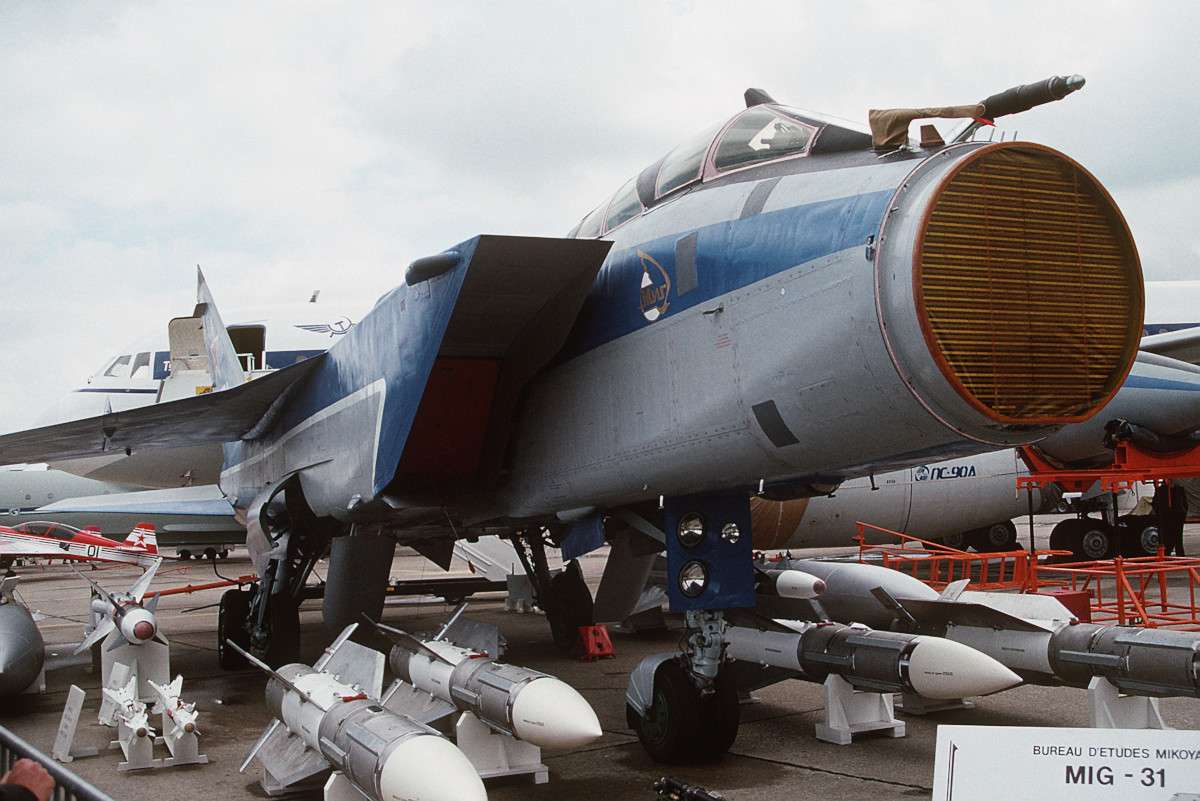
DOD
A MiG-31 at the Paris Air Show in 1991 with its radome removed, exposing the antenna for its Zaslon radar. Four R-33 missiles, among others, are arrayed in front of the plane, as well.
The S-800 armament control system is supposed to automatically alert the crew if they inadvertently target an aircraft with a known Identification Friend or Foe (IFF) signal. In this case, it classified the other MiG-31, which had a working IFF system, as an “alien target.”
Not only that, investigators found that personnel within the unit in question were aware of “abnormal operation” of the S-800 and that it was not necessarily uncommon. The report also blamed ground crews, who had been unable to determine the source or sources of the problem, for failing to monitor and report the issues.
But the investigation itself does not say when the problems may have first begun to present themselves, even approximately, or recommend any sort of suspension in live-fire training activities until the issue had been resolved, according to Baza. It also does not offer any explanation of what the issue or issues might have been that caused the misidentification.
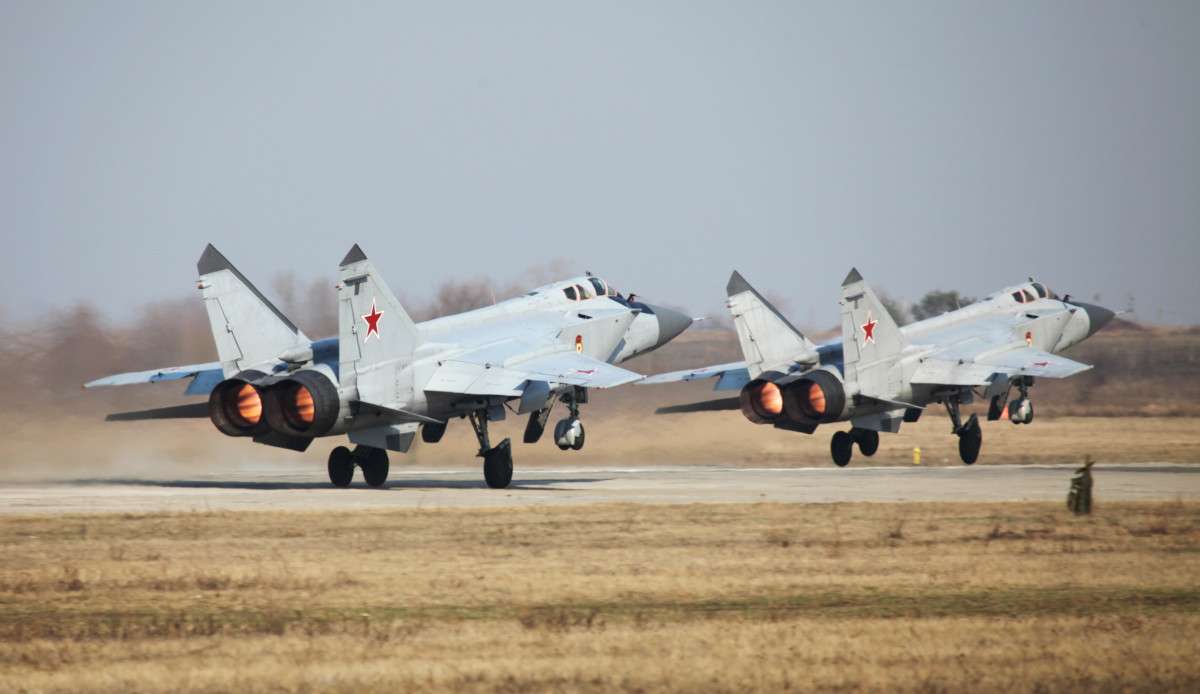
MiG
A pair of MiG-31s.
Baza, citing anonymous sources, suggests that part of the issue might be the simple inability of the computer processors in the Baget-55 to handle all of the information from the massive Zaslon-AM radar. This unit is a passive electronically scanned array (PESA) radar that actually consists of two distinct X- and L-band arrays working together.
The original Zaslon, which the Soviet Union developed in the late 1970s specifically for the MiG-31, holds a number of firsts, both in that country and internationally. It was the first PESA ever installed in a fighter jet and was also the Soviet Union’s first look down/shoot down radar. The original Argon-15A fire control computer associated with the radar was also the first digital computer for an airplane that the Research Institute of Computer Engineering had ever developed.
The MiG-31 series is the only aircraft to ever carry the Zaslon, as well as its improved variants. The first improved version, the Zaslon-M, which featured a larger overall antenna. Together with an improved version of the Argon computer, it could reportedly track up to 24 different targets and engage up to four opponents simultaneously. The Zaslon-AM further improves upon this with the more powerful Baget-55 in place of the earlier Argon types.
The video below describes many of the capabilities of the MiG-31's Zaslon radar and associated fire control system.
There are reports that even the improved Baget-55 may not have enough power to support the plane’s massive radar. One source told Baza that the pilots had been using an “experimental” mode of operation that involved repeatedly switching the radar on and off in a sort of manually pulsed mode to reduce the workload on the fire control computer.
It is possible that this, or a severe lag in the processing of information, to begin with, might have prevented the system from recognizing the IFF signal properly. It might have also prevented that information appearing in a timely manner on the radar screens inside the cockpit. Baza says that the report it obtained does not offer any additional details in this regard.
The Baget-55 may also limit the functionality of the MiG-31’s 8TK infrared search and track (IRST) system, which the plane has an alternate means of spotting and identifying targets. Baza’s sources said that the IRST, another system with Soviet-era origins, is not 100 percent compatible with the new Baget-55 and, as a result, no longer has automated functionality.
This all raises serious questions about the general capabilities of Russia’s premier long-range interceptor, which plays an extremely important role in defending large swaths of the country's airspace. Its high speed and long range make it ideal for dashing to meet potential threats across Russia, including its most remote areas, such as the increasingly strategic Arctic region.
The Zaslon-AM’s look down/shoot down capabilities, originally intended to spot and target low-flying American B-1 and B-52 bombers, means the planes also reportedly have the ability to shoot down low-flying cruise missiles, too. The improved MiG-31BM also has encrypted datalinks that allow it to share information from its powerful radar – when it’s working properly – with other aircraft and control centers on the ground.
Of course, if these problems are not uncommon, it raises the question about why there has only been one actual incident of friendly fire, even just since the introduction of the Zaslon-AM on improved MiG-31BM aircraft four years ago. This could mean the issue may be linked more to exactly how the crew was operating the radar in this case, whether this was an “experimental” procedure or not.
There is always the possibility that there have been other close calls that the Kremlin has kept hidden over the years, too. In this particular case in Siberia, the IFF system on the other MiG-31 may have been working, but also improperly configured for some reason and was sending out a code that would not register as friendly. The investigators might not have been able to confirm this depending on what they could recover from the crash and what other radar and IFF data was available to them after the incident.
It’s also not clear why the two planes, had they been training together, would not have been aware of each other’s relative positions. It seems curious that the pilot in the aircraft that launched the missile would not have realized the “target” was exactly where their wingman should have been and that their companion was not on the radar at all. That a friendly aircraft was ever in the potential danger area during a live shoot certainly does call into question how the exercise was structured and whether the crews followed proper procedures, as the official investigation notes.
If nothing else, the report, and Baza's analysis of its contents, underscores just how much remains unknown about the incident. Key details about the entire chain of events are absent, including the relative ranges and altitudes of the two MiG-31s, what they expected the actual mock threat to look like, the rules of engagement for the live shoot, and any of the other specific exercise parameters.
With this report out in the open now, more details may emerge in the future that will help further clarify what happened in the sky over Buryatia in 2017. But if the incident was a case of friendly fire, the Kremlin will continue to have incentives to withhold information that could not only be embarrassing, but that might call into question the capabilities of a central component of Russia's air defense network.
Russian MiG-31 Foxhound Shot Down Its Wingman During Disastrous Live Fire Exercise
A new report, citing a leaked Russian government document, says that a crash of MiG-31 Foxhound in Siberia almost two years ago was actually the result of a friendly fire incident during a botched training exercise. In addition, the summary of the mishap suggests that there could be dangerous problems with the aircraft’s Zaslon-AM radar and Baget-55 fire control system that might increase the risk of more accidental shootdowns occurring in the future.
Baza, a relatively new Russian independent online investigative news outlet, revealed the new information on Apr. 23, 2019. The incident in question had occurred on Apr. 26, 2017, over the Telemba proving ground in Buryatia, a semi-autonomous republic within Russia that borders Mongolia. At the time, the Kremlin said that the plane had been on a training exercise, but offered no additional details about the mishap. Both of the Foxhound’s crew survived the incident.
"The plane crashed at a proving ground in an unpopulated area. Both pilots ejected themselves,” the Russian Defense Ministry had said in a statement. “They were promptly evacuated. Their life is not in danger.”
Until now, there had been no additional information about the mishap at all, which Baza’s story noted was unusual in of itself. The Russian government does not generally shy away from blaming crashes on pilot error or grounding entire aircraft fleets if an accident exposes a potential systemic issue with the plane in question.

Alex Beltyukov via Wikimedia
A Russian MiG-31 Foxhound.
The report from Rosaviaprom, which oversees the country’s state-owned aviation and space enterprises, that Baza obtaineddoes blame pilot error for the mishap. But it just so happens that they determined that the crew of the crashed plane and the craw in a second MiG-31 taking part in the training exercise were both at fault.
The investigators concluded that the crew in the plane that got shot down had improperly followed procedures, allowing them to stray into the potential line of fire during the live-fire exercise. It also faulted aviators flying the other Foxhound for turning on their Zaslon-AM’s fire control function at the wrong time, cueing an R-33 missile right at their wingman. They further blamed the pilot for firing the weapon when this individual should have known they were not engaging a target drone.
The R-33 is a very long-range air-to-air missile that can be loosely considered an analog for the American AIM-54 Phoenix long-range air-to-air missile. It uses Inertial Navigation System guidance to get to the general target area after getting cued in the right direction by the launching aircraft. A semi-active radar homing system helps with initial target acquisition and then provides updated position information during the missile's mid-course flight profile. An active radar seeker in the missile kicks in during the terminal phase to guide it the rest of the way to the target.
Rosaviaprom's explanation of events isn't necessarily unrealistic. In August 2018, the pilot of a Spanish Eurofighter Typhoon accidentally fired an AIM-120 Advanced Medium-Range Air-to-Air Missile (AMRAAM) during a training flight over Estonia. Thankfully no one was injured in that incident, which a subsequent investigation also blamed on pilot error. Video footage also emerged in 2017 showing a Russian Ka-52 alligator attack helicopter inadvertently firing rockets at observers during a training exercise.
It would also explain why Russian authorities might have decided not to publicize the cause of the 2017 crash. A steady stream of mishaps in recent years has raised questions about the readiness of Russia’s combat aircraft fleets and its aviators. A friendly fire incident during a training exercise, for any reason, is an embarrassment, in general.
But Baza uncovered a significant additional detail in its review of Rosaviaprom’s report. The MiG-31’s Zaslon-AM radar and its Baget-55 fire control computer, referred to collectively by the designation S-800, were not working properly at the time.

DOD
A MiG-31 at the Paris Air Show in 1991 with its radome removed, exposing the antenna for its Zaslon radar. Four R-33 missiles, among others, are arrayed in front of the plane, as well.
The S-800 armament control system is supposed to automatically alert the crew if they inadvertently target an aircraft with a known Identification Friend or Foe (IFF) signal. In this case, it classified the other MiG-31, which had a working IFF system, as an “alien target.”
Not only that, investigators found that personnel within the unit in question were aware of “abnormal operation” of the S-800 and that it was not necessarily uncommon. The report also blamed ground crews, who had been unable to determine the source or sources of the problem, for failing to monitor and report the issues.
But the investigation itself does not say when the problems may have first begun to present themselves, even approximately, or recommend any sort of suspension in live-fire training activities until the issue had been resolved, according to Baza. It also does not offer any explanation of what the issue or issues might have been that caused the misidentification.

MiG
A pair of MiG-31s.
Baza, citing anonymous sources, suggests that part of the issue might be the simple inability of the computer processors in the Baget-55 to handle all of the information from the massive Zaslon-AM radar. This unit is a passive electronically scanned array (PESA) radar that actually consists of two distinct X- and L-band arrays working together.
The original Zaslon, which the Soviet Union developed in the late 1970s specifically for the MiG-31, holds a number of firsts, both in that country and internationally. It was the first PESA ever installed in a fighter jet and was also the Soviet Union’s first look down/shoot down radar. The original Argon-15A fire control computer associated with the radar was also the first digital computer for an airplane that the Research Institute of Computer Engineering had ever developed.
The MiG-31 series is the only aircraft to ever carry the Zaslon, as well as its improved variants. The first improved version, the Zaslon-M, which featured a larger overall antenna. Together with an improved version of the Argon computer, it could reportedly track up to 24 different targets and engage up to four opponents simultaneously. The Zaslon-AM further improves upon this with the more powerful Baget-55 in place of the earlier Argon types.
The video below describes many of the capabilities of the MiG-31's Zaslon radar and associated fire control system.
There are reports that even the improved Baget-55 may not have enough power to support the plane’s massive radar. One source told Baza that the pilots had been using an “experimental” mode of operation that involved repeatedly switching the radar on and off in a sort of manually pulsed mode to reduce the workload on the fire control computer.
It is possible that this, or a severe lag in the processing of information, to begin with, might have prevented the system from recognizing the IFF signal properly. It might have also prevented that information appearing in a timely manner on the radar screens inside the cockpit. Baza says that the report it obtained does not offer any additional details in this regard.
The Baget-55 may also limit the functionality of the MiG-31’s 8TK infrared search and track (IRST) system, which the plane has an alternate means of spotting and identifying targets. Baza’s sources said that the IRST, another system with Soviet-era origins, is not 100 percent compatible with the new Baget-55 and, as a result, no longer has automated functionality.
This all raises serious questions about the general capabilities of Russia’s premier long-range interceptor, which plays an extremely important role in defending large swaths of the country's airspace. Its high speed and long range make it ideal for dashing to meet potential threats across Russia, including its most remote areas, such as the increasingly strategic Arctic region.
The Zaslon-AM’s look down/shoot down capabilities, originally intended to spot and target low-flying American B-1 and B-52 bombers, means the planes also reportedly have the ability to shoot down low-flying cruise missiles, too. The improved MiG-31BM also has encrypted datalinks that allow it to share information from its powerful radar – when it’s working properly – with other aircraft and control centers on the ground.
Of course, if these problems are not uncommon, it raises the question about why there has only been one actual incident of friendly fire, even just since the introduction of the Zaslon-AM on improved MiG-31BM aircraft four years ago. This could mean the issue may be linked more to exactly how the crew was operating the radar in this case, whether this was an “experimental” procedure or not.
There is always the possibility that there have been other close calls that the Kremlin has kept hidden over the years, too. In this particular case in Siberia, the IFF system on the other MiG-31 may have been working, but also improperly configured for some reason and was sending out a code that would not register as friendly. The investigators might not have been able to confirm this depending on what they could recover from the crash and what other radar and IFF data was available to them after the incident.
It’s also not clear why the two planes, had they been training together, would not have been aware of each other’s relative positions. It seems curious that the pilot in the aircraft that launched the missile would not have realized the “target” was exactly where their wingman should have been and that their companion was not on the radar at all. That a friendly aircraft was ever in the potential danger area during a live shoot certainly does call into question how the exercise was structured and whether the crews followed proper procedures, as the official investigation notes.
If nothing else, the report, and Baza's analysis of its contents, underscores just how much remains unknown about the incident. Key details about the entire chain of events are absent, including the relative ranges and altitudes of the two MiG-31s, what they expected the actual mock threat to look like, the rules of engagement for the live shoot, and any of the other specific exercise parameters.
With this report out in the open now, more details may emerge in the future that will help further clarify what happened in the sky over Buryatia in 2017. But if the incident was a case of friendly fire, the Kremlin will continue to have incentives to withhold information that could not only be embarrassing, but that might call into question the capabilities of a central component of Russia's air defense network.
Russian MiG-31 Foxhound Shot Down Its Wingman During Disastrous Live Fire Exercise
Russia’s Ka-52 attack helicopter may get new long-range missile
Russia’s Ka-52 attack helicopter may get new long-range missile
A source earlier told TASS that a missile codenamed ‘item 305" had been developed for the Mi-28NM helicopter
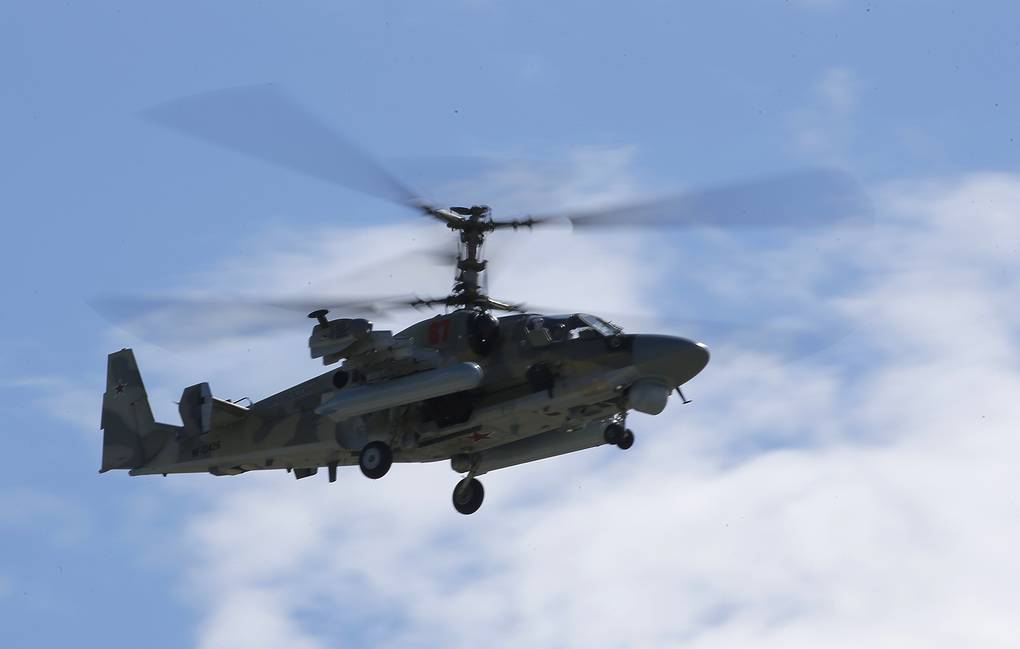
Ka-52 attack helicopter
© Sergei Karpukhin/TASS
MOSCOW, July 2. /TASS/. Russia’s Ka-52 attack helicopter may receive a new long-range missile developed for the Mi-28NM gunship, CEO of Russian Helicopters rotorcraft manufacturer (part of the state hi-tech corporation Rostec) Andrei Boginsky told TASS on Tuesday.
"Now that this has been implemented for the Mi-28, this is an issue of standardization. Technically, this is possible. If such a task is set, we will be working on that in cooperation with Rostec enterprises," Boginsky said, replying to a question of whether there were plans to arm the Ka-52 with the new missile that was undergoing trials aboard the Mi-28NM.
"The task is to standardize radio-electronic equipment, the arms control system and the armament itself so that both our Defense Ministry and foreign customers have the possibility of a choice," the chief executive said.
In the process of the Ka-52’s modernization, following the results of its use in the Syrian military campaign, Russian specialists "improved the helicopter’s optoelectronic system, which boosted the gunship’s range of detecting and identifying targets day and night," the Russian Helicopters chief executive said. The Ka-52’s endurance to stay far from aerodromes was also improved, he added.
In its footage aired on June 23, the Defense Ministry’s Zvezda TV Channel showed the tests of a new long-range missile being developed for Mi-28NM gunships.
A source in the domestic defense ministry told TASS in March that a missile codenamed ‘item 305" had been developed for the Mi-28NM helicopter. The missile was designated to destroy the armor and reinforced concrete fortifications and had a range capability of over 25 km.
The missile flies towards its target using the data of the onboard inertial navigation system and its homing warhead is activated at the final stage of the missile’s trajectory. Another source told TASS at the time that the missile had undergone tests in Syria together with its launch vehicle.
Russia’s Ka-52 attack helicopter may get new long-range missile
A source earlier told TASS that a missile codenamed ‘item 305" had been developed for the Mi-28NM helicopter

Ka-52 attack helicopter
© Sergei Karpukhin/TASS
MOSCOW, July 2. /TASS/. Russia’s Ka-52 attack helicopter may receive a new long-range missile developed for the Mi-28NM gunship, CEO of Russian Helicopters rotorcraft manufacturer (part of the state hi-tech corporation Rostec) Andrei Boginsky told TASS on Tuesday.
"Now that this has been implemented for the Mi-28, this is an issue of standardization. Technically, this is possible. If such a task is set, we will be working on that in cooperation with Rostec enterprises," Boginsky said, replying to a question of whether there were plans to arm the Ka-52 with the new missile that was undergoing trials aboard the Mi-28NM.
"The task is to standardize radio-electronic equipment, the arms control system and the armament itself so that both our Defense Ministry and foreign customers have the possibility of a choice," the chief executive said.
In the process of the Ka-52’s modernization, following the results of its use in the Syrian military campaign, Russian specialists "improved the helicopter’s optoelectronic system, which boosted the gunship’s range of detecting and identifying targets day and night," the Russian Helicopters chief executive said. The Ka-52’s endurance to stay far from aerodromes was also improved, he added.
In its footage aired on June 23, the Defense Ministry’s Zvezda TV Channel showed the tests of a new long-range missile being developed for Mi-28NM gunships.
A source in the domestic defense ministry told TASS in March that a missile codenamed ‘item 305" had been developed for the Mi-28NM helicopter. The missile was designated to destroy the armor and reinforced concrete fortifications and had a range capability of over 25 km.
The missile flies towards its target using the data of the onboard inertial navigation system and its homing warhead is activated at the final stage of the missile’s trajectory. Another source told TASS at the time that the missile had undergone tests in Syria together with its launch vehicle.
Russian heavy strike drone Okhotnik makes first flight
Russian heavy strike drone Okhotnik makes first flight
The first flight lasted for over 20 minutes
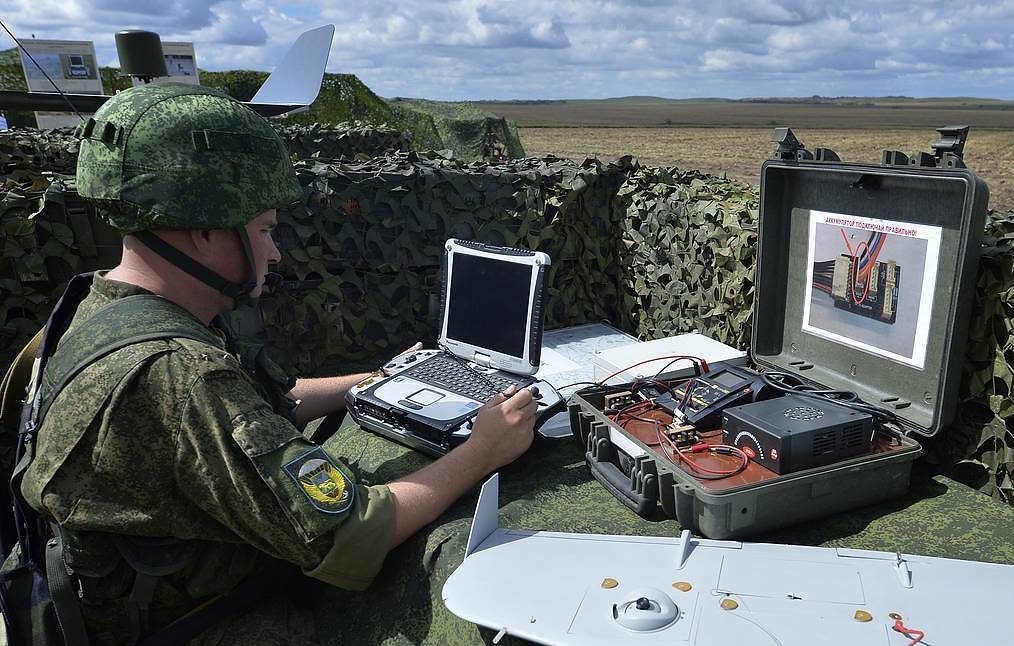 © Yuri Smityuk/TASS, archive
© Yuri Smityuk/TASS, archive
MOSCOW, August 3. /TASS/. Russia’s Okhotnik (Hunter) heavy unmanned combat aerial vehicle (UCAV), developed by the Sukhoi Design Bureau, has made the first flight, the Russian Defense Ministry told reporters on Saturday.
"Under the test program, a long-duration flight time UCAV Okhotnik has performed its first flight," says the press release circulated by the defense ministry. "The first flight took place at 12.20 Moscow time and lasted for over 20 minutes. The aerial vehicle flown by the operator made several circles around the airfield at an altitude of 600 meters and then successfully landed."
According to the defense ministry, the drone is being tested at a military test airfield.
Okhotnik has a low signature, a flying wing aerodynamic scheme, and a takeoff weight of 20 tons. It is made of composite materials and a radar-absorbing coat. The drone has the most advanced reconnaissance equipment.
Russian heavy strike drone Okhotnik makes first flight
The first flight lasted for over 20 minutes

MOSCOW, August 3. /TASS/. Russia’s Okhotnik (Hunter) heavy unmanned combat aerial vehicle (UCAV), developed by the Sukhoi Design Bureau, has made the first flight, the Russian Defense Ministry told reporters on Saturday.
"Under the test program, a long-duration flight time UCAV Okhotnik has performed its first flight," says the press release circulated by the defense ministry. "The first flight took place at 12.20 Moscow time and lasted for over 20 minutes. The aerial vehicle flown by the operator made several circles around the airfield at an altitude of 600 meters and then successfully landed."
According to the defense ministry, the drone is being tested at a military test airfield.
Okhotnik has a low signature, a flying wing aerodynamic scheme, and a takeoff weight of 20 tons. It is made of composite materials and a radar-absorbing coat. The drone has the most advanced reconnaissance equipment.
MAKC 2019 Gigarama
МАКС 2019
Extended range air-to-surface missile Kh-29TE | Catalog Rosoboronexport
МАКС 2019
Extended range air-to-surface missile Kh-29TE | Catalog Rosoboronexport

